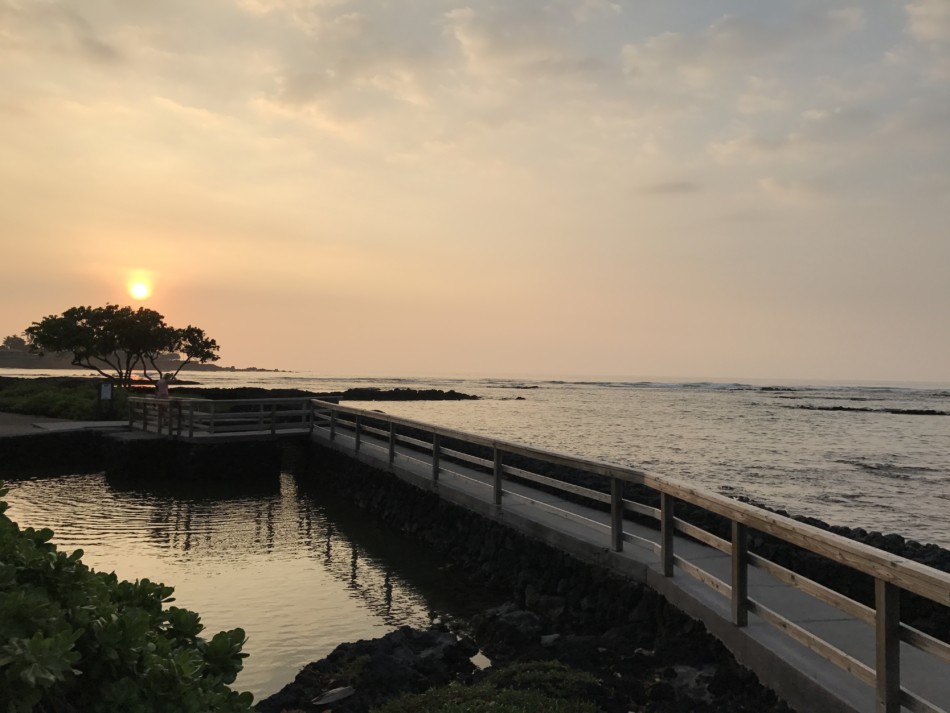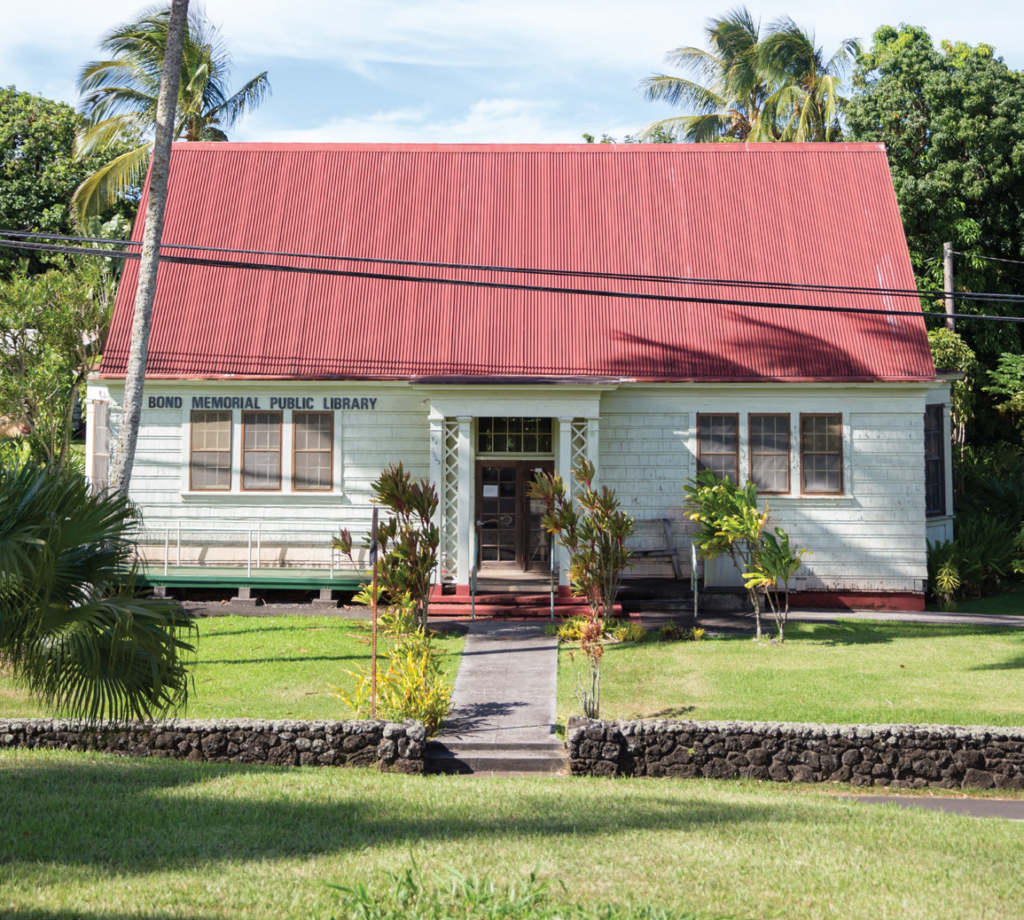For Preservation Month, we tapped into our diverse local community to find out more about the historic places they love and why they care about preserving them. We’ll be adding new content at the top of the page weekly on an ongoing basis to capture the essence of the historic places we cherish and want to protect.
The Kalahuipuaa Fish Ponds (shown above) are located at the Mauna Lani Resort on Hawaii Island and date back to 250 BC based on bottom samples. They are one of our favorite historic places and emit a tangible reminder of a Hawaii before Western contact when a simpler way of life, one which understood and integrated the Islands’ natural ecosystems into everyday existence, was prevalent. The fish ponds now serve as a powerful tool for sharing cultural education with the modern world.
Our Favorite Historic Places and Why We Care
Building 1102 on Hickam Field, also known as Headquarters Pacific Air Forces, Oahu
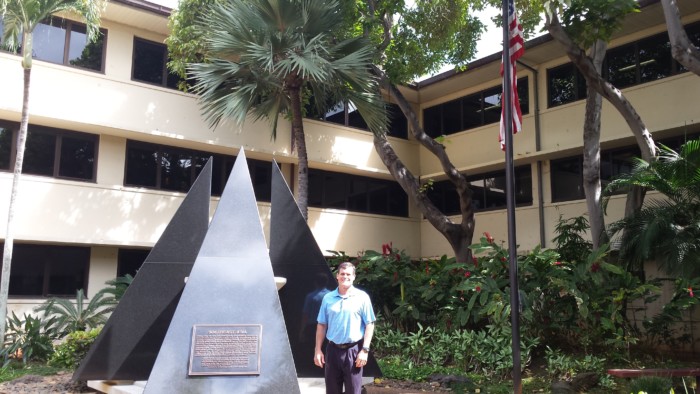
John Lohr in front of the Courtyard of Heroes
As the former Joint Base Pearl Harbor-Hickam Historic Preservation Officer (2014-2017) and 30 years of military service (with two tours at Hickam Air Force Base), I could easily list several historic places across the State of Hawaii. However, I selected Building 1102 on Hickam Field (also known as Headquarters Pacific Air Forces) as “my favorite historic place”. More specifically, the “Court Yard of Heroes” located within Building 1102.
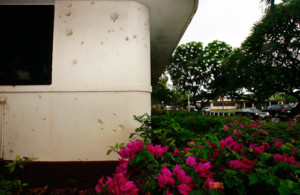
Bullet holes riddle the exterior of the PACAF Building on Hickam Air Force Base. The structure was once the barracks of the airmen during the 1941 attack. (Photo/caption from Cindy Ellen Russell, Honolulu Star Advertiser)
The Court Yard of Heroes was established in 1995 and dedicated during the 50th Anniversary commemorating the end of World War II. While not a historic property by definition or criteria, it is a remembrance (memorial dedicated) to the brave men and women of our armed forces who served in World War II, the Korean War, and the Southeast Asia campaign. It is the perfect setting and used often by our Armed Forces for remembrance, promotions, retirements, and various special events. In essence, it captures the military’s proud history, heritage, and culture.
Building 1102 was built in 1940-1941 as a 3,200 person barracks. During the attack on Pearl Harbor, to include Hickam Field, on December 7, 1941, it sustained extensive damage (primarily from aircraft straffing and shrapnel from bomb damage). The scars from the attack are very much visible today and a prominent character defining feature.
Making Building 1102 and the Court Yard of Heroes even more special to me is the fact I was the Headquarters Pacific Air Forces Senior Engineer during the planning and programming of the Building 1102 renovation; served as the Joint Base historic preservation officer during a couple of construction phases of the design-build contract, and am now working in Building 1102 as the Chief, Engineer of the Pacific for Headquarters Pacific Air Forces. I have come full circle and have the unique privilege and honor to experience this historic building and place of remembrance daily.
John R. Lohr, AIA, FSAME, recently served as the Historic Preservation Officer for the Naval Facilities Engineering Command, Hawaii and Navy Region Hawaii from April 2014 to May 2017. He is currently serving as the Chief, Civil Engineer Division, Air Force Installations and Mission Support Center, Detachment 2, Joint Base Pearl Harbor-Hickam. Mr. Lohr is a retired Air Force Colonel with 30 years of service. He was awarded the Bronze Star for Meritorious Service during his combat tour of duty in direct support of Operations ENDURING and IRAQI FREEDOM. He is a registered architect in the State of Colorado.
____________________________________________________________________________________________
ʻIolani Palace, Oahu
ʻIolani Palace is a symbol of Hawaiʻi’s history. This was where the last King and Queen lived. Queen Liliʻuokalani was imprisoned in this Palace and during her imprisonment she wrote mele which are still sung today. When going on tours of the Palace you are able to imagine what life was like then and be able to visualize the events that occurred in the Palace. ʻIolani Palace is a good reminder for people to remember their history and for people to know the history of Hawaiʻi.
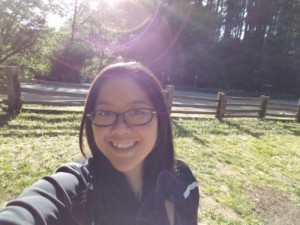
Sky Uyehara was born and raised in Hawaiʻi and graduated from Hawaii Baptist Academy. She attended Fresno State and finished her schooling graduating with a bachelor’s degree in Ethnic Studies from the University of Hawaii at Mānoa where she has recently been accepted into the Urban and Regional Planning Masters Program.
______________________________________________________________________________________________
Church of the Crossroads, Oahu

The Church of the Crossroads, on University Avenue in Honolulu, is a building that can be appreciated and admired on many levels: significant architect, innovative design, impressive art, inspiring inception, successful preservation, social activism – it’s a long list.
However, the entrance experience is one of the many special ways that this landmark is meaningful for me. The almost universal approach to a house of worship is to first confront you with an impressive facade that has a set of significant doors – you see immediately how you’re going to enter. Not here. At the Church of the Crossroads, you first see only the back of the nave. But a path a short distance in either direction leads you through a lush landscape and into a loggia that surrounds a large grassy courtyard.
This is not at all a formal layout, but an asymmetrical space that feels random, casual, and comfortable. You don’t finally see the sanctuary entrance until you’ve been encouraged to acknowledge that you have entered a protected environment that subtly proclaims “you are all welcome in our community – please join us.”
After 80 years, the Church continues to represent an ideal that feels as current, and as severely challenged, as this morning’s news.
John B. Williams moved to Hawaii 4 1/2 years ago. He’s a retired architect, HHF member and volunteer since 2013, and a Docomomo US – Hawaii board member. Little known fact: John cataloged the HHF library of preservation-related books in our office (and its full of gems!) and shared interesting tidbits he learned related to architecture, history and preservation, along the way!
__________________________________________________________________________________________________
Pu`uwa`awa`a, North Kona, Hawai‘i Island
Located in the northern end of Kona is my most favorite place in Hawai‘i, Pu`uwa`awa`a, because of its history and its future.
A land that represents a lifestyle that tested ones logic and self-sustainability. 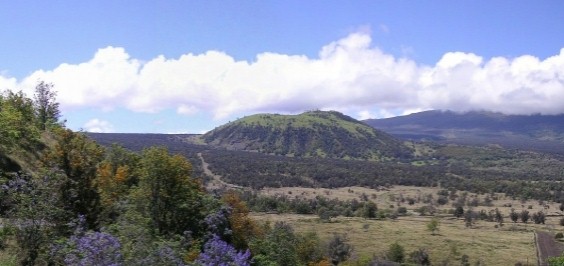
A land that taught one to partner common sense and perseverance whether traveling its upland forests or its fishponds of Kiholo.
In this vast dry land Kekaha, it matters to preserve its storied past for conservation of its future.

Laurette “Pixie” Gail Navas has been a vital part of the KHS family since 1998, contributing her expertise to the Kona Coffee Living History Farm, the H.N. Greenwell Store Museum and the Jean Greenwell Research Collection as a member of the society’s archive team. Her decades of experience and personal connection to Kona as the daughter of a ranching family ensures the historical information contained within the archives and reflected in KHS’ programs is as authentic as possible.
“Pixie” Navas was recognized for Individual Achievement in the field of preservation at the 2017 Preservation Honor Awards for her exemplary contributions to preserving places significant to the history of Hawai‘i.
__________________________________________________________________________________________________
Kapaau, Hawai‘i Island
I wonder if the tourists posing for photos in front of the Kamehameha Statue understand the significance of this place, because if you blink you might miss the town altogether. The story behind how the statue got here is now part of local folklore, but as told, it was originally bound for Honolulu, shipwrecked and ultimately ended up in its current spot after a second statue was already cast for Honolulu. Some say it was meant to be here-the King’s birthplace, and I tend to agree.
On the other side of the highway stands Bond Memorial Library, a quaint building I always thought looked more like an old house than a library. (Photo of Bond Library courtesy of David Croxford.) I’d often go to the library after school with my older siblings or when my father had business to tend to in the area. It had an Old Hawaii charm to it, tiny by today’s standards, but loaded with character.

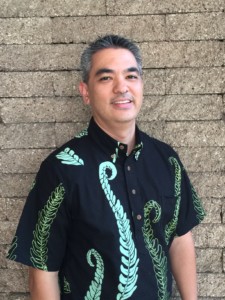
Roy Murai is Director of Investments for Queen’s Health Systems providing essential leadership in managing QHS’ diversified financial asset and pension portfolios. He has 20 years of experience in the financial services industry, including former positions with Tsukazaki & Associates and Origin Financial Group. He has a Bachelor’s degree from the University of Hawai‘i at Mānoa and is a graduate of Kamehameha Schools.
___________________________________________________________________________________________________
Old Haiku Cannery, Maui
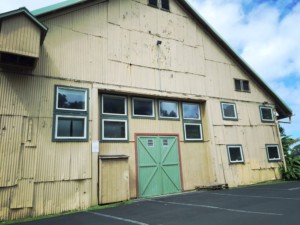
Old Haiku Cannery, photos from Yelp
I live and work in Haiku, Hawai‘i an agricultural community on the north shore of Maui. Today it’s a tropical jungle exurb of central Maui as well as a mecca for big wave surfers and organic boutique farmers, but previously it was a pineapple growing and processing community. The heart of the community was and remains the old Haiku Cannery. 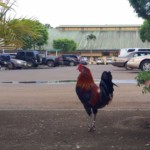
This large wood frame cannery structure has yellow corrugated metal siding and a green corrugated metal roof with clerestory windows to ventilate the structure. It has been converted into a plethora of contemporary uses that include: restaurants, yoga, martial arts, art studios, board shaping workshops, a bike shop, hammock shop, neighborhood grocer and a hardware store. It’s a great building with a lot of character that evokes the past and also has a lot of life in it for the future

Paul Areus is the founder of Areus Architecture in Maui, Hawaii. He has a background in Sustainable Architecture and has enjoyed renovating buildings and designing new ones throughout Maui and other parts of Hawaii over the past 10+ years. The rich cultural history of Hawaii and the unique geography and climate create limitless opportunities to engage and create new living and working environments for people.
_______________________________________________________________________________
Maunalei, Lāna‘i
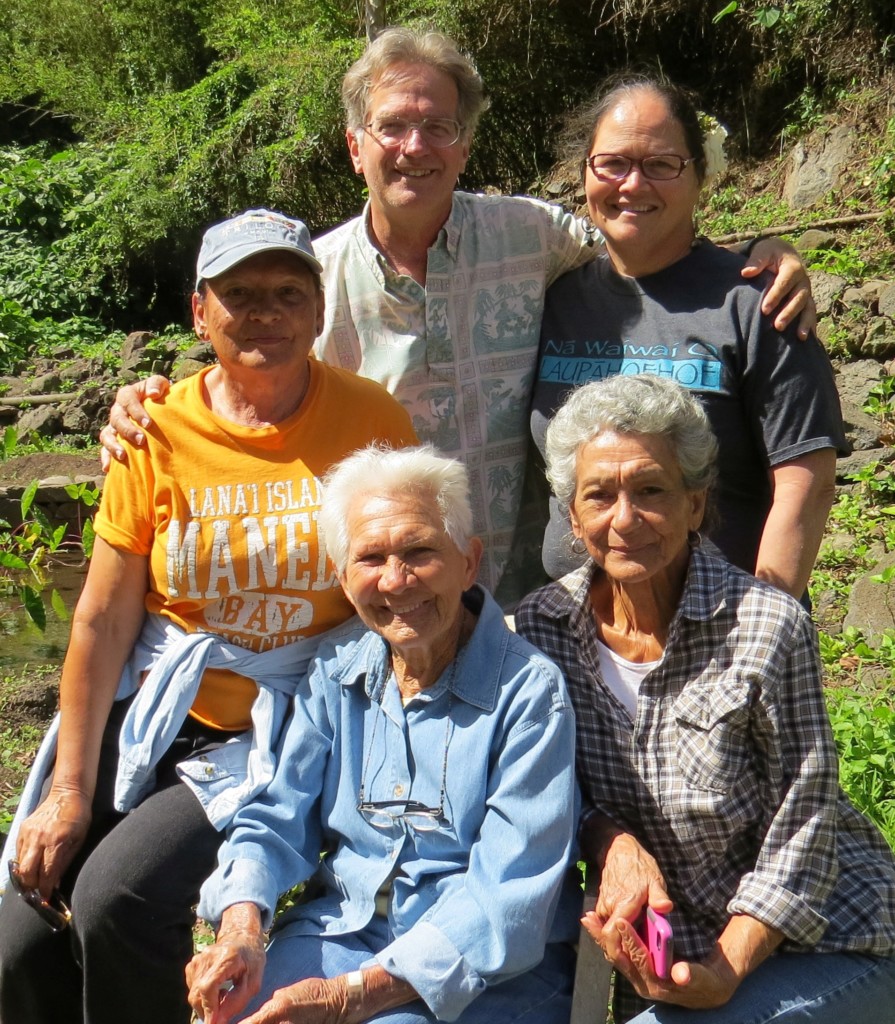
100 year old Kupuna Irene Kamahuialani Cockett Perry, her daughters Moana Freitas and Momi Suzuki, and Onaona and Kepa Maly at Maunalei Valley (part of old lo’i in background).
All of Hawai‘i’s honua ola (bio-cultural landscape) is sacred and rich in legacy. How fortunate that we live in Hawai‘i and have the opportunity to learn about and care for storied places like Maunalei on the island of Lāna‘i.
Early Hawaiian historical records describe the valley of Maunalei as once supporting a population of 1,000 people with the product of its lo‘i kalo and dry-land agricultural system. The valley reaches into the heart of Lāna‘i, and experiencing the traditional cultural landscape along with the built historic landscape—dating from the early 1900s and through the pineapple plantation era—crosses generations of history.
We share a kuleana for our honua ola, and working in Maunalei touches the heart and soul of those who travel through time in the valley.

Kepā and Onaona Maly manage the Lāna‘i Culture & Heritage Center and support heritage programs of the Hoakalei Cultural Foundation. Together, they have worked across the state conducting oral history interviews and cultural historical studies. Working together with such Kūpuna as Irene Kamāhuialani Cockett Perry and her daughters (pictured above on a recent visit to Maunalei), Kepa and Onaona document the history of place, passing a rich cultural legacy on to future generations.
Kepā also assists Pūlama Lāna‘i with management of cultural resources across the island of Lāna‘i.
_________________________________________________________________________________________________
Old Volcano House, Hawai‘i Island
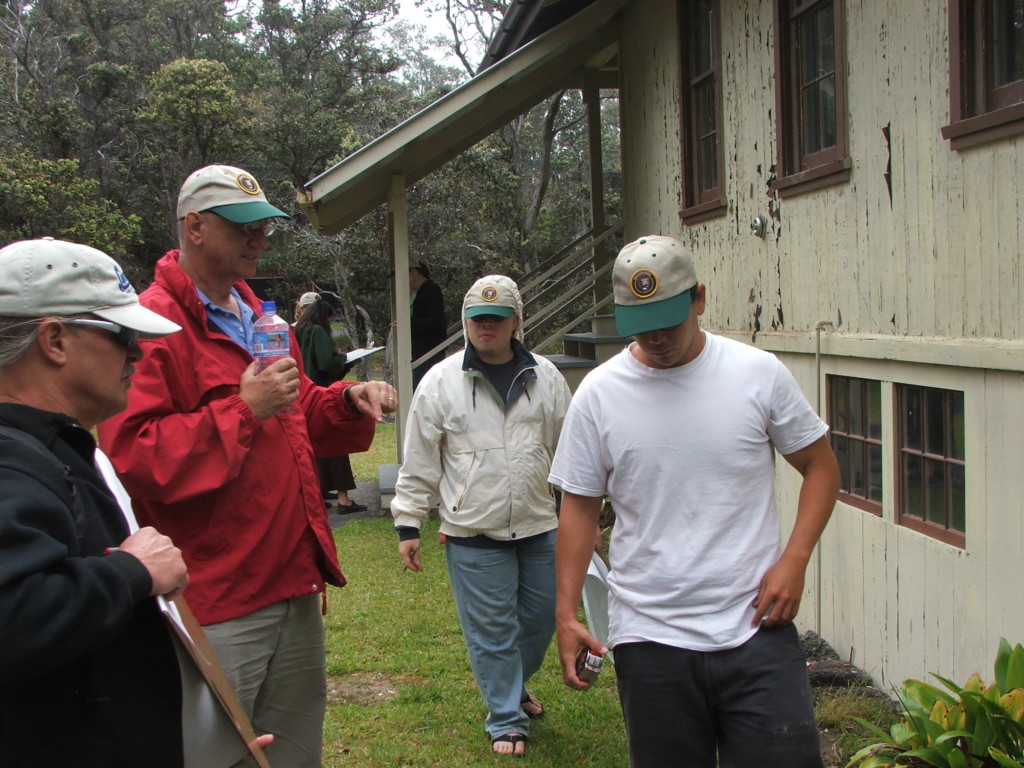
Field School 2006
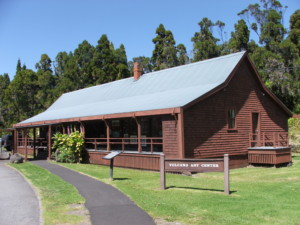
Volcano Arts Center
My favorite historic site is the Old Volcano House*, now the Volcano Arts Center, in Kilauea. It was built in 1877 to replace a similar-looking, grass-covered hotel, built a decade before. Eventually the overflow wing for the much more developed Volcano House, this building miraculously survived a fire in 1940. It remained semi-derelict for years until architect Boone Morrison took on its restoration in 1973. It is a true survivor from Hawaii’i’s earliest days of tourism and a rare example of a kingdom-era building still visit-able today.
You can “feel” the history, from the depressed surfaces of the thresholds to the whitewashed ohia posts and rafters. The fireplace emits the sour smell of burning wood; the painting over the fireplace was by D. Howard Hitchcock, ostensibly added to pay his bar bill. The builders and early visitors were living at a time when King Kalakaua still ruled, when Waikiki was a sand bar with palms, and the only way to travel was by horseback (or a carriage).
Dr. Bill Chapman, Director of the Graduate Program in Historic Preservation and Professor in the Department of American Studies at the University of Hawai‘i at Manoa. Dr. Chapman was educated at Columbia (M.S. in Historic Preservation, 1978) and at Oxford University in England (D.Phil. in Anthropology, 1982). He specializes in architectural recording, the management of historic districts, and materials conservation. Dr. Chapman is a frequent consultant to state, national and international historic preservation organizations and is widely recognized as a leading authority in recording historic architecture and in policies and procedures for historic preservation at both the local and national levels.
*The Volcano House restoration project received a Preservation Award in 1978; a Preservation Commendation Award in 2010 for the “1877 Volcano House Historic Structures Report”, a detailed study of the old Volcano House intended to serve as a baseline document for future management of the site; and Preservation Award in 2011 for preservation work to repair damage resulting from the 2006 earthquake.


